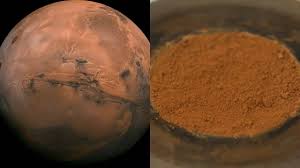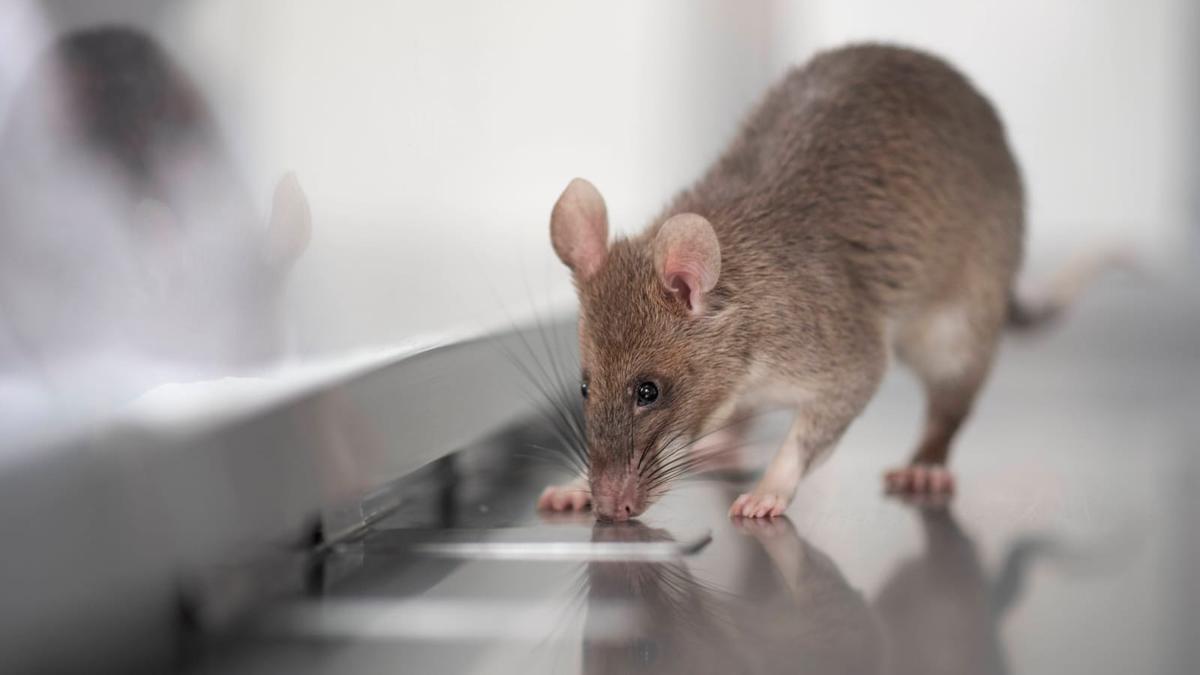Exercise Desert Hunt 2025

- 04 Mar 2025
In News:
Exercise Desert Hunt 2025 was a high-intensity Tri-Service Special Forces military drill conducted by the Indian Air Force at Air Force Station Jodhpur, Rajasthan, from 24 to 28 February 2025.
Participating Forces
- Indian Army: Para (Special Forces)
- Indian Navy: Marine Commandos (MARCOS)
- Indian Air Force: Garud Special Forces
Objective
- To enhance interoperability, coordination, and operational synergy among the Special Forces of the three services.
- To ensure swift and effective responses to emerging security threats through joint operations.
Key Activities
- Airborne insertion and combat free-fall
- Precision strikes and counter-terrorism drills
- Hostage rescue operations
- Urban warfare simulations
- Validation of joint operational doctrines under realistic combat conditions
Significance
- Strengthens tri-service integration and fosters inter-service cooperation.
- Reinforces the commitment of the Indian Armed Forces to national security.
- Provides a platform for doctrinal validation and operational readiness.
Bond Central
- 04 Mar 2025
In News:
The Securities and Exchange Board of India (SEBI) has launched Bond Central, a centralized and authentic information portal for corporate bonds in India. The initiative aims to enhance transparency, standardize data, and enable informed decision-making in the corporate debt market.
About Bond Central
- Launched by: SEBI (Securities and Exchange Board of India)
- Developed by: Online Bond Platform Providers Association (OBPP Association) in collaboration with Market Infrastructure Institutions (MIIs)—including stock exchanges and depositories
- Operated by: OBPP Association (a not-for-profit entity)
- Accessibility: Free and open to the public
- Purpose: To serve as a centralized, authentic source of information on corporate bonds issued in India
Key Features of Bond Central
- Unified Listings:
- Offers a comprehensive view of corporate bonds across all exchanges and issuers.
- Enhances transparency by allowing investors to compare bond data seamlessly.
- Price Comparison Tool:Enables investors to compare corporate bond prices with Government Securities (G-Secs) and other fixed-income indices, supporting better investment decisions.
- Investor-Centric Information:
- Provides access to risk assessments, disclosures, and corporate bond documentation.
- Helps investors effectively evaluate and compare investment opportunities.
- Standardization & Transparency:
- Standardizes corporate bond-related data to reduce information asymmetry.
- Builds trust in the bond market by ensuring consistency and reliability of information.
Significance for the Market
- Promotes Transparency: Makes vital market data openly accessible.
- Empowers Investors: Facilitates research-based and informed investment decisions.
- Strengthens Market Infrastructure: Aligns with SEBI’s goal of improving market efficiency and trust.
Current Status
- Phase 1 of Bond Central is live as of early 2025.
- More features are to be added progressively based on stakeholder feedback.
Why Mars is Red?

- 04 Mar 2025
In News:
Mars, often called the Red Planet, owes its distinctive hue to the iron-rich mineral ferrihydrite, according to a recent multi-agency study published in Nature Communications. This research offers significant insights into Mars’ ancient climate, the possibility of past water, and the planet’s habitability.
Key Discoveries:
- Primary Cause of Red Color:
- Ferrihydrite, a water-formed iron oxide, has been identified as the main source of Mars’ red dust.
- Previously, hematite—an iron oxide that forms in dry conditions—was believed responsible. The new evidence suggests cooler, water-rich conditions prevailed when ferrihydrite formed.
- Martian dust, dispersed globally by winds, contains ferrihydrite, giving Mars its iconic red appearance.
- Significance of Ferrihydrite:
- It forms only in the presence of liquid water and oxygen, implying that ancient Mars had a more temperate and moist environment.
- Hydrogen bound to ferrihydrite suggests past interactions between water and iron.
- Methodology:
- The study used data from NASA and ESA missions, including:
- Mars Reconnaissance Orbiter
- Mars Express
- Trace Gas Orbiter
- Ground-level data from rovers like Perseverance, Curiosity, and Opportunity
- Lab simulations recreated Martian conditions to study how ferrihydrite interacts with light and other minerals.
- The study used data from NASA and ESA missions, including:
Role of NASA’s Perseverance Rover:
- Launched in 2020, landed in 2021, Perseverance is collecting soil and rock samples.
- These samples will help validate the presence of ferrihydrite and the climatic conditions required for its formation.
Climatic Evolution of Mars:
- Mars once likely supported liquid water and a mild climate, possibly suitable for life.
- Over billions of years, the solar wind stripped away its atmosphere due to the absence of a strong magnetic field.
- This led to a transition to today's cold, dry, and barren landscape.
Facts about Mars:
- Position: 4th planet from the Sun
- Size: Radius ~3,390 km (~half of Earth’s)
- Moons: 2 – Phobos and Deimos (likely captured asteroids)
- Day (Sol): 24.6 hours
- Year: 687 Earth days
- Tilt: 25° (similar to Earth’s 23.4° → seasonal changes)
- Temperature Range: +20°C to -153°C
- Surface Features:
- Olympus Mons: Largest volcano in the solar system
- Valles Marineris: Giant canyon system, 10x longer than Grand Canyon
- Atmosphere: Thin, mostly CO?; lacks global magnetic field
- Dust Storms: Frequent and planet-wide, lasting months
Key Mars Missions:
- NASA: Perseverance, Curiosity, Spirit, Opportunity
- India: Mars Orbiter Mission (Mangalyaan)
- UAE: Hope Mission
- China: Tianwen-1
State of India’s Digital Economy Report 2025

- 04 Mar 2025
In News:
The Indian digital economy is growing twice as fast as the overall economy and is projected to contribute 20% of India’s GDP by 2029, according to the State of India’s Digital Economy (SIDE) 2025 Report released by the Indian Council for Research on International Economic Relations (ICRIER) and its Prosus Centre for Internet and Digital Economy (CIDE).
Key Highlights:
- Global Standing:
- India is the 3rd largest economy globally.
- However, it ranks only 28th in digital user spending, reflecting a significant per capita digital adoption gap.
- In terms of a combined ranking of economic size and digital user economy, India stands 8th globally.
- CHIPS Framework for Digitalisation:The report uses the CHIPS framework to assess digital development:
- Connect: Internet access, affordability, and quality.
- Harness: Usage intensity, fintech adoption.
- Innovate: Start-up ecosystem, AI readiness.
- Protect: Cybersecurity and digital rights.
- Sustain: Green energy investments in the digital sector.
Strengths:
- Harnessing Digital Potential:
- India performs strongly in ICT service exports.
- The Indian IT sector has the third-highest global market capitalisation, after the U.S. and China.
- High levels of fintech usage and a robust start-up ecosystem contribute to digital growth.
- Digital Growth Rate:
- The digital economy is expanding at twice the pace of the broader economy.
Challenges:
- Low Per Capita Spending:Despite high internet penetration, digital service usage and spending are low, particularly among the average user.
- Regional Digital Divide:Southern and Western states are significantly ahead in digital adoption compared to Northern and Eastern states, pointing to the need for region-specific policy support.
- Weakness in Emerging Technologies:
- India ranks 11th in AI research and 16th in AI infrastructure.
- It lags behind countries like the U.S., China, Singapore, South Korea, and the Netherlands in AI and advanced tech innovation.
- Adoption of Consumer IoT and the metaverse remains well below global medians.
Way Forward:
To bridge the digital usage gap and fully harness the potential of the digital economy:
- Policies must focus on increasing affordability, especially in under-served regions.
- There is a need to strengthen AI infrastructure and research.
- Investment in emerging technologies, decentralised finance, and digital skilling is vital.
- A targeted approach to address regional disparities will ensure inclusive digital growth.
HeroRATS and the Future of Tuberculosis Detection

- 04 Mar 2025
In News:
Tuberculosis (TB) remains one of the deadliest infectious diseases globally, with over 10 million new cases annually. India carries the highest TB burden, accounting for about 28% of global cases and recording nearly five lakh TB-related deaths each year—roughly one death every minute. Despite progress under the National Tuberculosis Elimination Programme (NTEP), which aims to eliminate TB by 2025 (ahead of the global 2030 target), early and accurate diagnosis remains a major hurdle, especially in children, low bacillary load cases, and underserved regions.
A Novel Solution: HeroRATS in TB Diagnosis
In a groundbreaking initiative, APOPO, a Tanzanian non-profit, has trained African giant pouched rats (HeroRATS) to detect TB by sniffing sputum samples. These rats have highly sensitive olfactory receptors, enabling them to detect TB cases that conventional diagnostics often miss.
Key Features of HeroRATS:
- Can screen 100 samples in 20 minutes, compared to 3–4 days by sputum-smear microscopy.
- Trained through operant conditioning, rewarded with food after accurate detection.
- Detect twice as many TB cases in children and six times more in low-bacillary-load patients than traditional methods.
- Confirmatory tests: Ziehl-Neelsen and fluorescent microscopy.
A 2023 study involving over 35,000 patients in Tanzania showed that HeroRATS detected over 2,000 additional TB cases, particularly among smear- or Xpert-negative patients. The method offers a fast, cost-effective, and scalable secondary diagnostic tool.
Relevance to India
With India facing challenges like poor health infrastructure in rural areas and reluctance to seek re-testing after a negative result, integrating HeroRATS into the NTEP could boost case detection. Experts suggest a phased rollout in high-burden states like Maharashtra and West Bengal. The Central TB Division’s collaboration with APOPO could help accelerate TB diagnosis and reduce transmission.
About Tuberculosis
- Cause: Mycobacterium tuberculosis, mainly affects the lungs, spread via airborne droplets.
- Prevalence: One-fourth of the global population is infected; only 5–10% show symptoms.
- Risk Factors: Weakened immunity, malnutrition, diabetes, tobacco and alcohol use.
- Diagnosis: WHO recommends rapid molecular tests like Xpert MTB/RIF Ultra.
- Prevention: BCG vaccine at birth.
- Treatment: Standard 4–6 month antibiotic course.
- Drug-Resistant TB:
- MDR-TB: Resistant to isoniazid and rifampicin.
- XDR-TB: Resistant to multiple drug classes, harder to treat.
- TB-HIV Link: HIV patients are 16 times more likely to develop TB.
Bio-detection Beyond Rats: Macrosmatic Species in Medicine
Several animals with heightened olfactory senses are being used in disease detection:
- Dogs: Detect Parkinson’s, cancers, and diabetes using their 125–300 million olfactory receptors and Jacobson’s organ.
- Ants: Trained to detect cancer cells within three days using chemical signals.
- Honeybees: Can differentiate between types of lung cancer with 88% accuracy using synthetic biomarkers.
